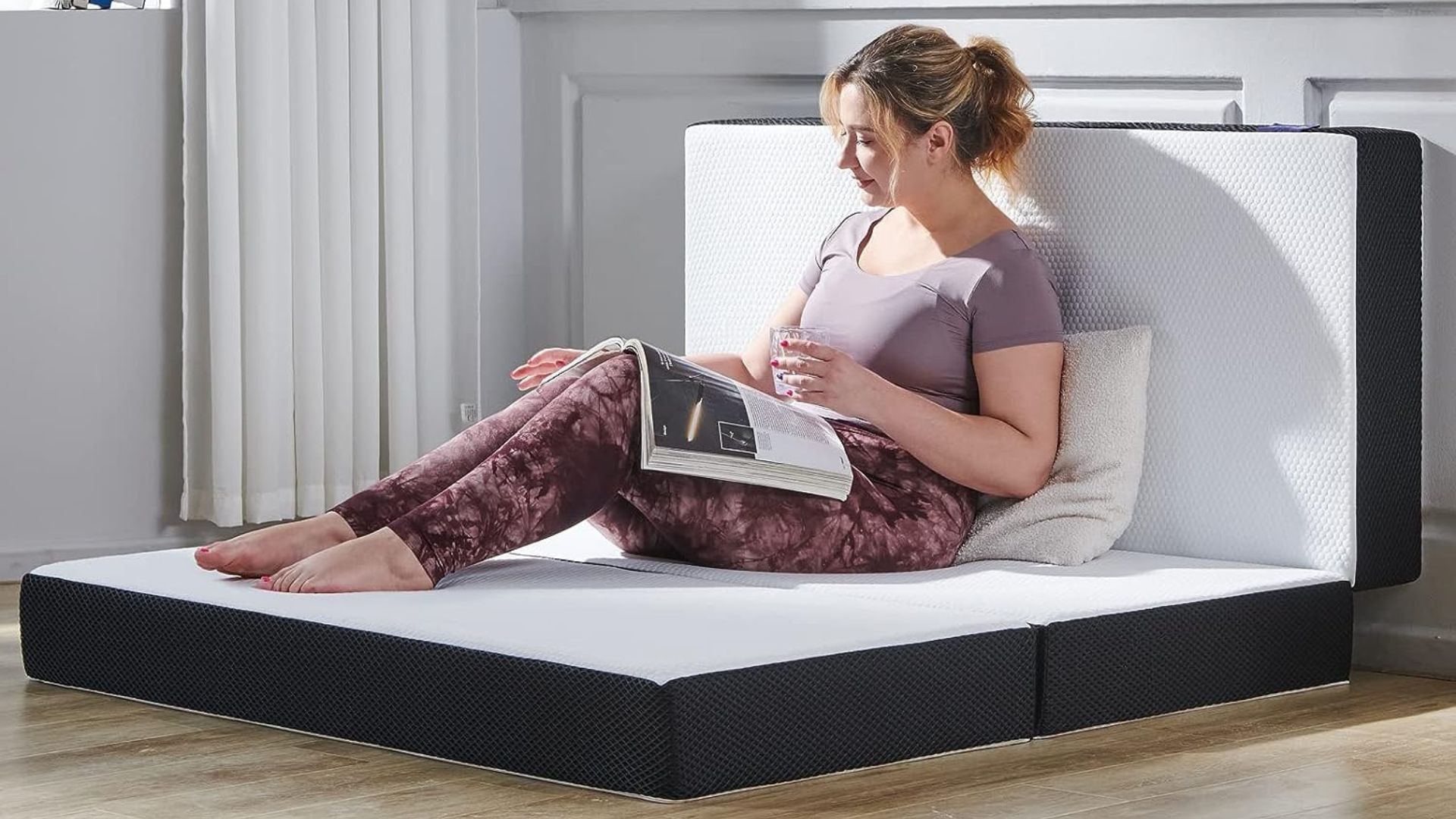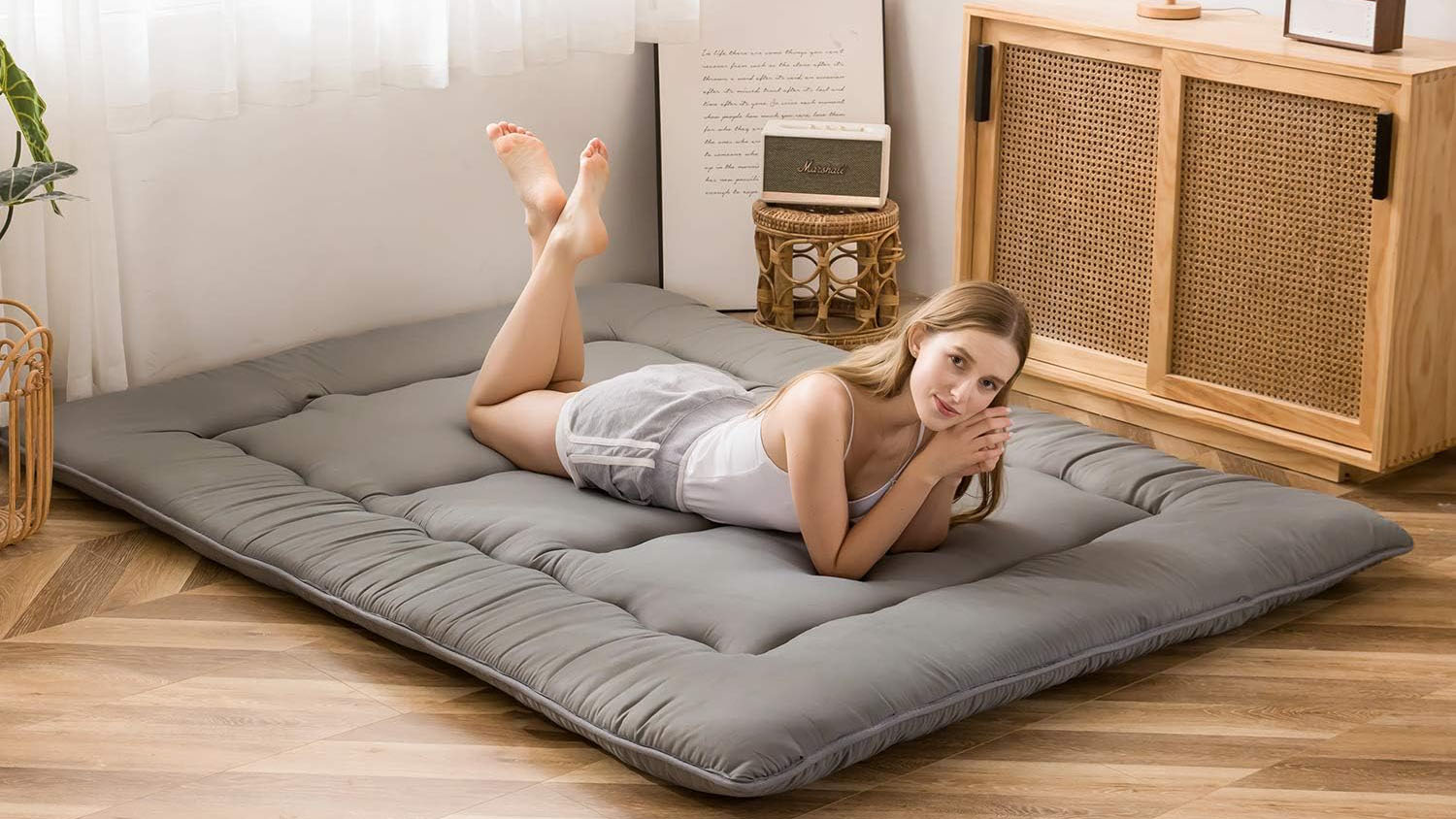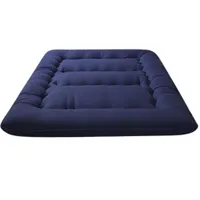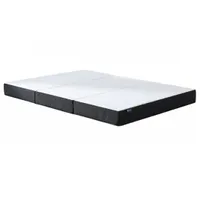Rollaway bed vs foldable mattress vs Japanese floor mattress: Which is best for your sleep and budget?
We compare the pros and cons of foldable mattresses, rollaway beds, and Japanese floor mattresses

Rollaway beds, foldable mattresses, and Japanese floor mattresses are perfect if you're looking for a temporary sleep solution on a tight budget. These practical, compact beds can be compressed and stored away when not in use, making them ideal for travelling, small spaces, or accommodating overnight guests.
While these three portable beds may be the best mattresses for temporary sleeping arrangements, they do have their key differences. Here, we'll compare the design, comfort, and support offered by rollaway beds, foldable mattresses, and Japanese floor mattresses, so you can explore which is right for you.
We'll also look at which is better for your budget, and where to buy the best rollaway beds, foldable mattresses, and Japanese floor mattresses ahead of the Memorial Day mattress sales. Let's get started.
What is a rollaway bed?

A rollaway bed (sometimes known as a folding bed or camping cot) is a type of lightweight camp bed that features a thin, flexible mattress and a lightweight, metal frame that can be folded and stored away when not in use. Traditionally, a sturdy cloth was stretched over the frame for a sleep surface, but most rollaway beds now use all-foam mattresses instead.
What is a foldable mattress?

A foldable mattress (also known as a z-bed or tri-fold mattress) consist of three foam panels that can be folded three times. When unfolded, it resembles a thick (around 3" to 6") sleeping pad or floor mattress. When folded twice, it resembles a low chair or sofa. When folded completely, it can be stored away.
What is a Japanese floor mattress?

A Japanese floor mattress (otherwise known as a shikibuton or a Japanese futon) is a rectangular, quilted pad or mat designed to be placed on the floor when sleeping and rolled up when not in use. In Japan, floor mattresses are typically laid out onto a tatami (a type of straw mat) to add some comfort and keep the mattress dry by absorbing moisture .
- Read more: I tried Amazon’s best-selling Japanese floor mattress — here’s what to know before buying.
- Read more:I slept on the MAXYOYO Japanese Floor Mattress — this is why it's the best Amazon Prime Day deal
- Read more: Japanese floor mattress vs topper: which made the right temporary bed for me?
Rollaway bed vs foldable mattress vs Japanese floor mattress: Price
One of the biggest draws of Japanese floor mattresses, rollaway beds, and foldable mattresses is their low cost. These temporary beds are much cheaper than even the best cheap mattresses and the traditional guest bed that features a bed frame complete with a full-fledged mattress and bedding.
Get instant access to breaking news, the hottest reviews, great deals and helpful tips.
However, that doesn't mean all three suit all budgets. In terms of cost, a foldable mattress is your best option. A typical twin-size trifold bed is usually around $50 to $150, with some popular discounted Z-beds available for under $50. Japanese floor mattresses are also great options if you're on a tight budget, with a good-quality Japanese futon ranging from $50 to $200. A queen-size futon is usually around $100 to $170.

Rollaway beds tend to be more expensive as they include both a frame and a slim mattress. While you can get a folding bed for around $120 (usually when on sale in the smaller sizes), most are over $150 and can slip into the over-$200 territory. However, you can buy rollaway beds that do not include a mattress, which takes the price under $100.
Rollaway bed vs foldable mattress vs Japanese floor mattress: Design
All three beds have a folding, compact design that are great for storing away and saving room in a small space. However, some are more portable than others and require less assembly.
Perfect for small rooms, Japanese floor mattresses have the slimmest, simplest design of the three. These futons resemble thick mats, usually made from foam and a cotton cover, that can be rolled up and put away. They are often accompanied by Tatami mats to keep the mattress clean and dry, but this accessory is optional and isn't usually included when purchasing a futon.

Foldable mattresses have the most versatile design, and can be used for different things depending on the way they are folded. For example, when laid flat, they act as a bed, but when folded they can become a chair, sofa, or foot rest. However, they are thicker and less compact than Japanese floor mattresses, so they do take up more room when not in use.
Rollaway beds can be sleek when folded up, but some may have trouble with folding and assembling the frame. The frames are known to lose their balance when stood up or not being sturdy enough to support heavier bodies. However, out of the three kinds of portable mattresses, rollaway beds are the most similar to traditional beds and tend to provide more comfort.
Rollaway bed vs foldable mattress vs Japanese floor mattress: support and comfort
As with most thin beds or floor mattresses, Japanese futons can be quite firm (even those made with plush memory foam), which is good news for some sleepers. Back and stomach bleepers, for example, benefit from a firm mattress as it can keep their spines healthily aligned. However, the best mattresses for side sleepers need extra cushioning around the shoulders and hips so some may find Japanese floor mattresses to firm.
However, hot sleepers should find these light, breathable mattresses to sleep cool when placed on a Tatami mat or hard flooring. Their close proximity to the floor mean that they are more exposed to dampness, dirt, and allergens, so you'll need to clean and air out your futon regularly if you're prone to suffer from allergies. The same goes for foldable mattresses, though they do provide plusher comfort and more support thanks to their thicker, plumper design.

Rollaway beds are similar to traditional beds, only their frame is lighter and mattress slimmer and more flexible. Like all short-term beds, they can be firm thanks to their thin design, but they do provide more comfort and support than floor mattresses. They are also elevated from the ground, meaning they are less of a magnet for dirt, dampness, and allergens.
Overall, it's important to remember that all three types of bed should only be used for short-term sleeping arrangements. They're slim, compact designs mean they do not provide enough support and comfort in the long run.
Rollaway bed vs foldable mattress vs Japanese floor mattress: Which should you buy?
Buy a rollaway bed if...
✅ You have allergies. Rollaway beds are elevated, meaning you won't be exposed to the dirt, dampness, and allergens found on the floor
✅ You have the budget. Rollaway beds tend to be more expensive than floor mattresses, but the support and comfort they provide can be worth the price.
✅ You prefer the feel of a traditional bed. If the thought of sleeping on the floor seems uncomfortable and off-putting, then you may prefer the feel of a traditional bed frame and mattress.
Buy a foldable mattress if...
✅ You're on a tight budget. You can easily pick up a twin-size trifold mattress for under $50.
✅ You want more support. These are ideal for those who need the support of a firm mattress or have a heavier body.
✅ You have a larger space. If you'd like to use your foldable mattress when not sleeping on it, these chunky pads can be used as chairs, sofas, and foot rests when folded.
Buy a Japanese floor mattress if...
✅ You sleep on your back or stomach. These are the best mattresses for stomach sleepers and back sleepers as they support the hips and prevent them from dipping and sagging (which can misalign the spine and cause lower back pain).
✅ You sleep hot. Japanese futons provide temperature regulation for hot sleepers, thanks to their light, breathable cotton covers and close proximity to the floor.
✅ You have a small space. These mattresses an be rolled up and stored away easily when not in use.
Rollaway bed vs foldable mattress vs Japanese floor mattress: best deals
Milliard Signature Premier Diplomat Rollaway Bed: from $299.99 at Walmart
This may be expensive, but this rollaway bed is from popular temporary-bed brand Milliard and one of the best-rated rollway beds at Walmart. Customer reviews were pleased with its easy assembly, comfort, and folding design.
MAXYOYO Japanese Floor Mattress: from $95.99 at Amazon
This high-density memory foam futon is available in five sizes including small single and cot. It also comes with a microfiber cover to help keep the futon free of dust and allergens. However, this futon is spot clean only and hot sleepers should be aware that memory foam does have a tendency to trap heat. However, considering its price (you can pick up a queen for under $100) and firm rating, this mattress is ideal for those looking for a foldable bed for students, travellers, and guests.
S SECRETLAND Foldable Mattress: from $45.99 at Amazon
The S SECRETLAND folding mattress currently boasts over a thousand 5-star reviews on Amazon, with customers praising how easy it is to fold and the quality of sleep it provides. Adding temperature control with gel memory foam and high density foam for a balance of support and comfort, this bed is rated firm.

Frances Daniels is a PPA-accredited journalist and Sleep Staff Writer at Tom's Guide with an MA in Magazine Journalism from Cardiff University. Her role includes covering mattress and sleep news and writing sleep product reviews and buyer's guides, including our Best Hybrid Mattress 2025 guide. She is interested in the relationship between sleep and health, interviewing an array of experts to create in-depth articles about topics such as nutrition, sleep disorders, sleep hygiene, and mattress care. She is also our specialist on mattress toppers — producing bed topper reviews and taking care of our Best Mattress Toppers 2025 guide — and leads content relating to fiberglass-free beds for a non-toxic sleep. Outside of Tom's Guide, she has written for Ideal Home and Marie Claire.



